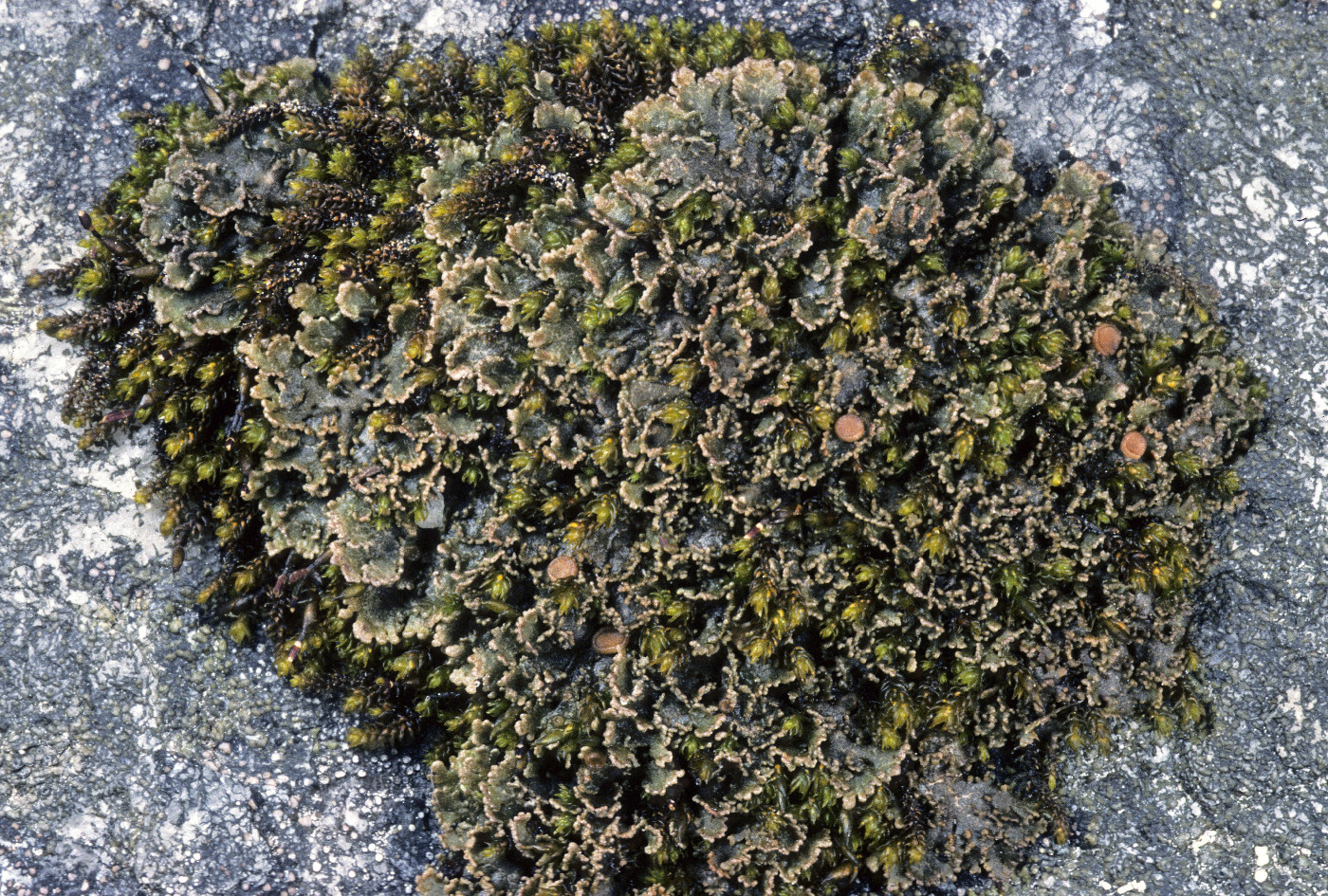
Consortium of Lichen Herbaria
- building a Global Consortium of Bryophytes and Lichens as keystones of cryptobiotic communities -
- Home
- Search
- Images
- Species Checklists
- US States: O-Z >
- US National Parks
- Central America
- South America
- US National Parks
- Southern Subpolar Region
|
Family: Massalongiaceae |
Nash, T.H., Ryan, B.D., Gries, C., Bungartz, F., (eds.) 2002. Lichen Flora of the Greater Sonoran Desert Region. Vol 1. Habit: lichenized Thallus: squamulose at least initially, becoming small foliose in one species, 1-3 cm diam., rosette-forming on smooth substrates, lobate lobes: roundish and scattered initially, becoming aggregated and in one species elongate upper surface: red brown to brown when dry, pale brown to deep green when wet, smooth, nodulose or sometimes with globose to cylindrical isidia; soredia lacking upper cortex: paraplectenchymatous, composed of 3-8 rows of cells medulla: white with loosely interwoven hyphae photobiont: primary one a cyanobacterium (Nostoc occurring in colonies throughout the medulla), secondary photobiont absent lower cortex: absent, but longitudinally oriented, ± densely interwoven hyphae delimit the lower side lower surface: brownish white, rhizinate; rhizines brown, sparse to densely tufted, at base of the lobes Ascomata: apothecial, rather rare, laminal or marginal, up to 2 mm diam., sessile to substipitate; margin: proper, paraplectenchymatous, sometimes tomentose, with or without supporting tissue (pseudoexciple); disc: flat, red-brown, smooth, paler marginally; hymenium: brown above, K-, colorless below, I+ blue; paraphyses: septate, simple or branched, 3-5 micrometer wide, apically ± swollen and pigmented ontogeny: hemiangiocarpic development asci: cylindrical, Peltigera-type (with apically thickened walls, I+ blue), 8-spored ascospores: polymorphous (broadly ellipsoid initially, becoming narrowly ellipsoid to fusiform), hyaline, 1-(-3) septate Conidiomata: pycnidial, brown above, pale below, immersed conidia: bacilliform to weakly bifusiform, colorless, simple, 2.5-6 x 1 micrometer Spot tests: all negative Secondary metabolites: none detected Geography: temperate to arctic regions of the Northern Hemisphere, Australasia and South America Substrate: mosses or sandstone. Notes: The genera Massalongia, Koerberia, Placynthium and Vestergrenopsis are all small, rosette-shaped, cyanobacterial-containing lichens that may may appear superficially similar. Vestergrenopsis has 12-16 spores per ascus and the other genera 8 spores or less per ascus. Koerberia has acicular, 0-1 septate spores whereas Massalongia and Placynthium have broader spores that are 1-3 septate. The photobiont in Massalongia is Nostoc whereas Placynthium has a photobiont belonging to the Rivulariaceae or Scytonemataceae. |
Powered by Symbiota









